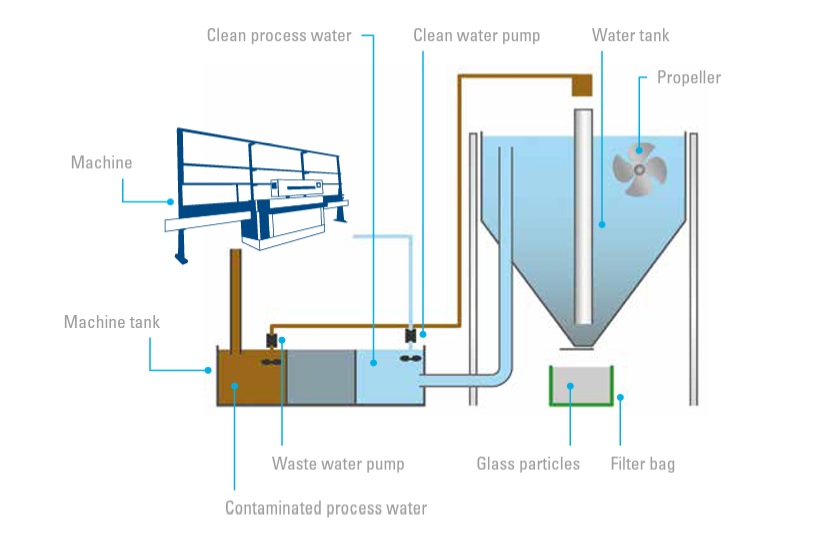During glass and mirror manufacture there is a lot of heat generated whilst drilling, milling, bevelling and edge polishing the items, this is dissipated using water jets; at the drill head as it is drilling the glass or mirror, on the grinding wheels as they are used to edge the glass or mirror.
Whilst this cooling is taking place small particles of glass or mirror are "ground" off and are mixed with the water. This would be unsuitable to be released directly into the main water system or sewage facilities as these particles would gradually block the drains and contaminate the water. That's where our water filtration plant comes into it's own.
As you can see from the diagram the water is pumped through the glass machines to cool the diamond tools, the dirty water is then pumped up to the filter system where the glass sediments are removed from the water. The water is then recycled to feed the machines and the sediments are left to settle at the bottom of the main tank forming into a sludge.
At 60 minute intervals the machine automatically opens a pneumatic valve to disperse the sludge into a re-usable bag, when this bag becomes full the sludge is then emptied into a recycling skip. This skip contains the other "off-cuts" of mirror and glass which the cutting machines produce and the whole lot is then collected and ground down to a powder. This powder is then added to paint to increase it's durability, this can be used for many applications including the white markings on our roads and at pedestrian crossings and the like.
Unfortunately it is used to do the yellow lines too. 


